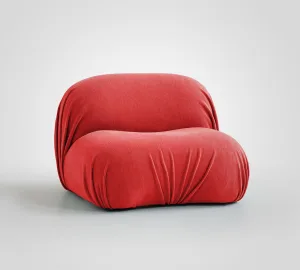Whether you’re designing a new home or revamping an old one, efficient use of space is crucial for creating an environment that is both functional and aesthetically pleasing. Here, we’ll explore key design principles, innovative solutions and smart tips that will transform your home into a practical and efficient living space.
1. Understand Your Space
Understanding your space is the first step to designing it efficiently. Assess the room’s layout, considering the shape, size and features such as windows, doors and built-in structures. Remember, every room has its potential and limitations, so focus on using what you have to your advantage.
2. Embrace the Concept of Minimalism
In interior design, less is often more. A minimalist approach helps to declutter the space, making it look clean and spacious. This doesn’t mean your room should lack personality or look empty. Instead, focus on the essentials and select furniture and décor that align with your style while offering practicality.
3. Incorporate Flexible Furniture
Invest in multi-functional or flexible furniture that can serve more than one purpose. For instance, consider using an ottoman that doubles as storage space or a sofa that transforms into a bed. This not only maximises space usage but also offers flexibility for different needs and situations.
4. Intelligent Use of Wall Space
Walls often provide untapped potential in many home designs. You can use them to mount shelves, creating additional storage without encroaching on your floor space. Alternatively, consider using wall paneling kits, which can help redefine your room, offering both a stylistic element and added functionality.
Wall panelling kits come in a variety of designs, textures and colours. Some include built-in shelving or integrated lighting, adding to their utility. Moreover, wall panelling can serve as an easy-to-clean surface in rooms such as the kitchen or bathroom, making your space not only stylish but also practical.
5. Opt for Vertical Storage Solutions
When floor space is limited, go vertical. Vertical storage solutions, like tall shelving units or wall-mounted racks, help to maximise your space. These can be used in any room of the house, from the kitchen to the bedroom, and they keep your items organised and easily accessible.
6. Light it Right
Good lighting can make a world of difference in your space. Natural light is ideal as it makes rooms appear larger and more inviting. Ensure windows are not blocked by furniture and use light, airy curtains that allow daylight to filter through. For artificial lighting, layer your lights to have a mix of ambient, task and accent lighting. This creates depth, highlights architectural features and enhances the room’s overall aesthetic.
7. Zone Your Space
Especially in open-plan homes or studio flats, zoning can be an effective way to define different areas for different activities. This could mean using rugs to delineate living and dining areas or using different paint colours or wallpaper designs to differentiate between zones. Room dividers, like shelves or screens, can also serve this purpose while adding an element of style.
8. Tailor Your Storage
Tailoring your storage solutions to your specific needs can significantly improve the efficiency of your space. If you have a lot of books, invest in a large bookshelf; if you’re a shoe enthusiast, consider a dedicated shoe rack. Customised solutions like built-in wardrobes or fitted kitchen units can maximise storage while maintaining a sleek, coherent look.
9. Use Mirrors Strategically
Mirrors can create the illusion of a larger space by reflecting light and views. Place them opposite windows to maximise natural light or use them to reflect a focal point in the room. Large, full-length mirrors can also double as stylish décor pieces.
10. Keep the Flow
Ensure there is a smooth flow of movement within your space. Avoid cluttering your space with too much furniture and ensure that doors can open fully without obstruction. Pathways should be clear, creating a natural flow from one area to the next.
In conclusion, designing a practical and efficient space may require a bit of thought and creativity, but the results can significantly enhance your living environment. By understanding your space, incorporating flexible furniture, using wall space intelligently, opting for vertical storage solutions, lighting your space effectively, zoning, tailoring storage solutions, using mirrors strategically and ensuring a smooth flow, you can transform any space into a comfortable, functional and stylish haven. Whether you’re working with a small flat or a large family home, these tips offer adaptable solutions for any scenario.





